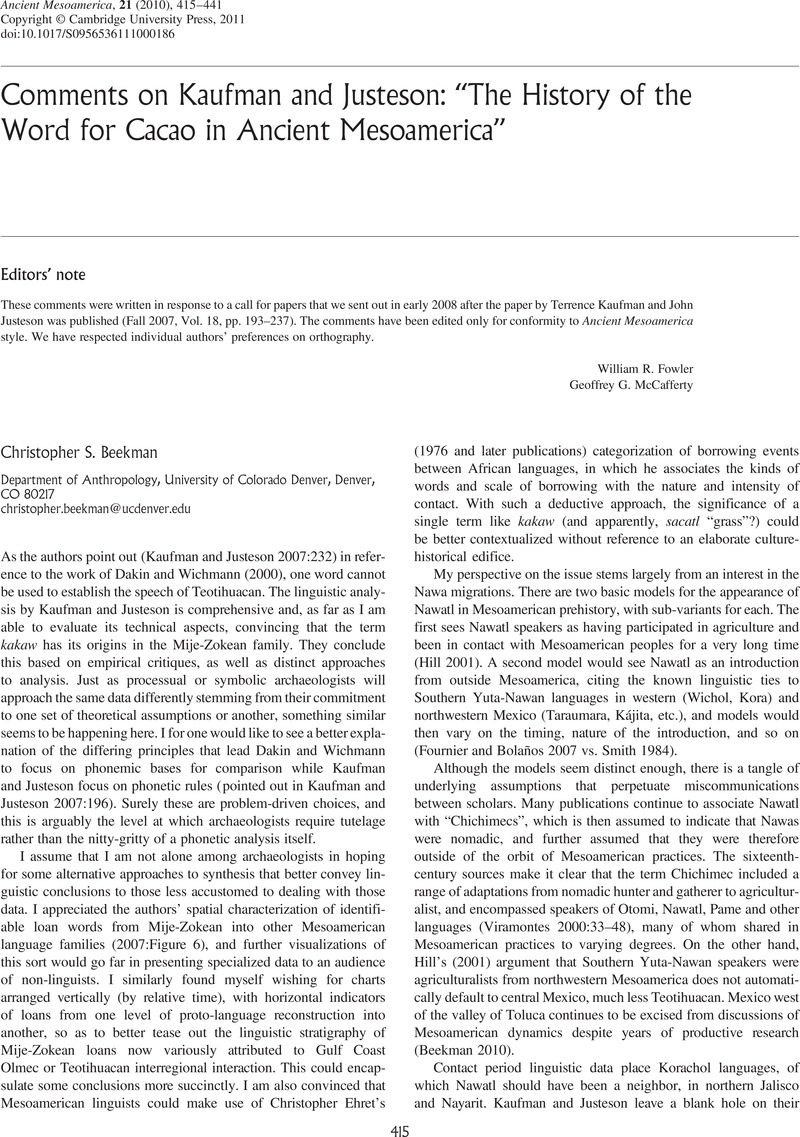Crossref Citations
This article has been cited by the following publications. This list is generated based on data provided by Crossref.
Speal, C. Scott
2014.
THE EVOLUTION OF ANCIENT MAYA EXCHANGE SYSTEMS: AN ETYMOLOGICAL STUDY OF ECONOMIC VOCABULARY IN THE MAYAN LANGUAGE FAMILY.
Ancient Mesoamerica,
Vol. 25,
Issue. 1,
p.
69.
Nichols, Deborah L.
2016.
Teotihuacan.
Journal of Archaeological Research,
Vol. 24,
Issue. 1,
p.
1.
Kettunen, Harri
2020.
NEW WORLD WORDS AND THINGS IN THE OLD WORLD: HOW THE AMERICAS CONQUERED THE WORLD.
Contributions in New World Archaeology,
Vol. 14,
Issue. ,
p.
97.



